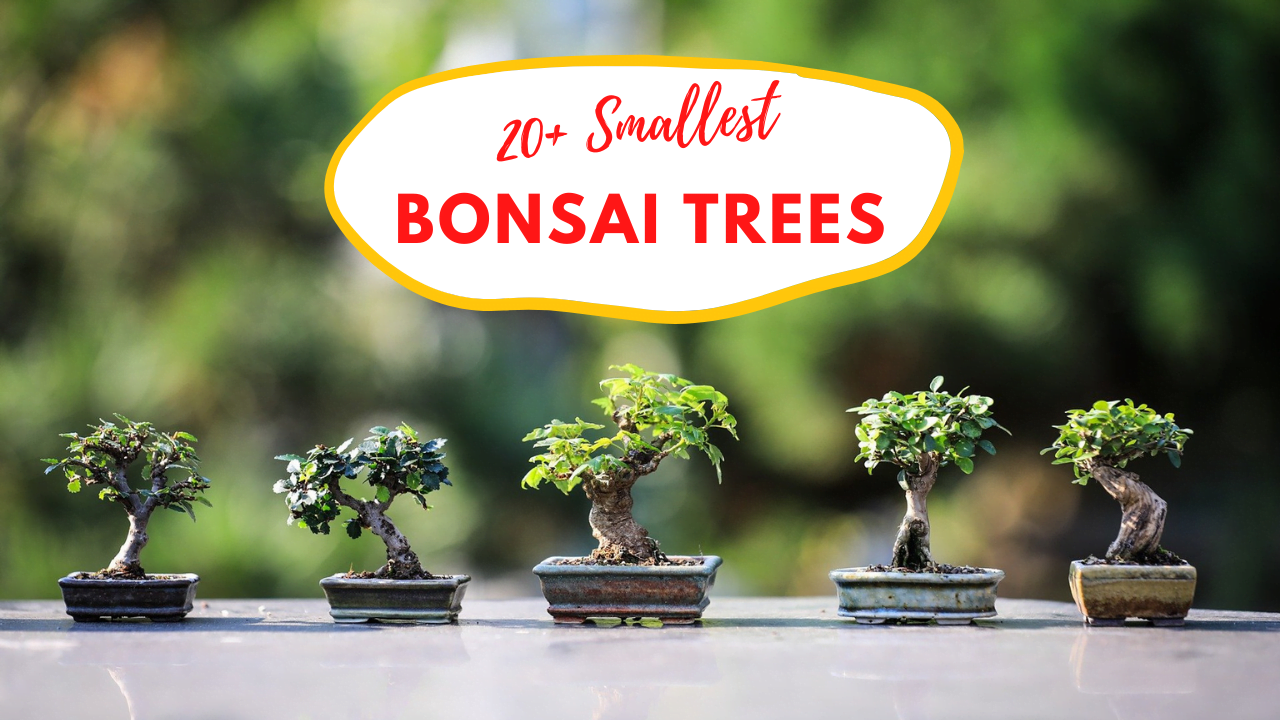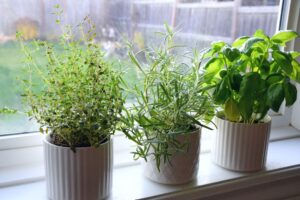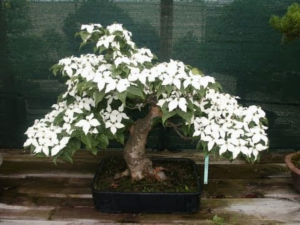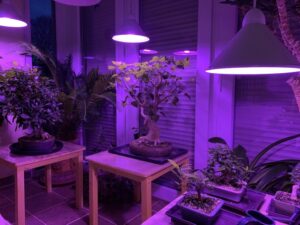Do you know that the smallest Bonsai tree can fit in the palm of your hand?
Many bonsai are grown directly in the garden with careful pruning, but some bonsai make wonderful indoor plants. Moreover, the smallest bonsai tree makes the best tabletop decor to show its delicate growth and colourful foliage.
This article will give you a tour of the 25 smallest bonsai that you can grow indoors and outdoors.
Flowering bonsai trees are a beautiful and unique addition to any indoor or outdoor space. These miniature trees bloom with stunning flowers, adding color and life to your environment. Popular flowering bonsai tree species include Azalea, Cherry Blossom, and Wisteria. Enjoy the beauty and tranquility of nature with a flowering bonsai tree.
1. Acer Momiji

You are looking at the tiniest bonsai tree. It’s so small that you could fit an entire forest in the palm of your hand.
But do not underestimate the power of mini bonsai. Because it may be small in size, it is big in personality.
It’s also known as Acer Palmatum, It got its botanical name from the hand-shaped leaves with five pointed lobes. “Acer” means “sharp,” which represents the edges of the leaves. “Palma ” is a Latin word for palm, as it represents the palm of your hand.
Locate this mini one on your fireplace mantel or sofa or side table, and watch the transformation it brings to your living room. Just do not dim its shine by placing it with other bigger plants.
2. Firethorn bonsai
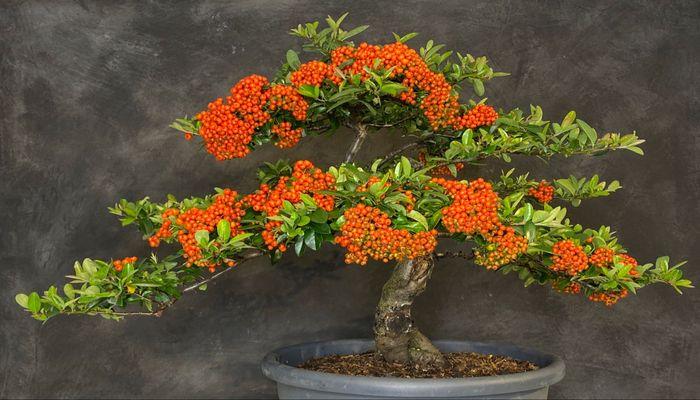
Firethorn, also known as ‘Pyracantha,’ is popular for its aesthetically pleasing look. These bonsai have beautiful flowers that bloom in the spring. Moreover, they produce berries.
Firethorn is ornamentally enriched and ideal for bonsai, even for beginners as they grow well with low effort and respond well to pruning and training.
The bonsai plant gets the Firethorn name from its thorn. It is best to be careful about these thorns, or they might harm you.
The need for this smallest bonsai is some wiring while it is tender.
3. Twin trunks
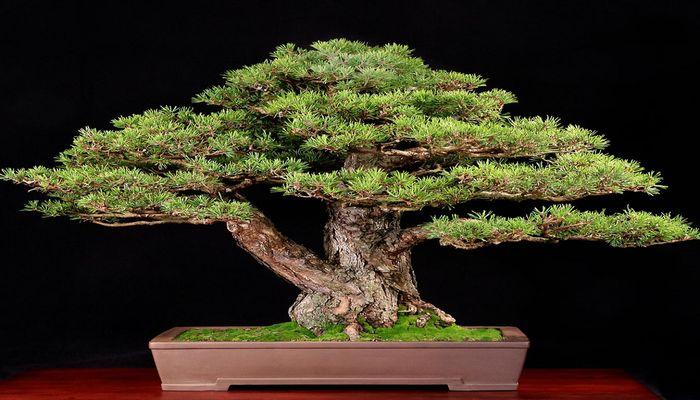
An amateur gardener planned a Scots Pine tree to form the smallest bonsai tree with two trunks.
Having two trunks has made it more visually appealing than usual. You can do these experiments only using rigorous methods of controlling pine trees’ rapid growth.
The tree must be grown completely inside a cabinet that does not permit it to expand beyond its limits.
Twin-trunk bonsai has two upright trunks that appear from the same roots and split into two trunks at the bottom. Both trunks should have identical shapes and features as they are growing together in the same atmosphere. But, one trunk should be noticeably taller, wider, and more muscular than the other as though it has acquired more light and nutrients from the shared roots than the other trunk.
4. Jade bonsai
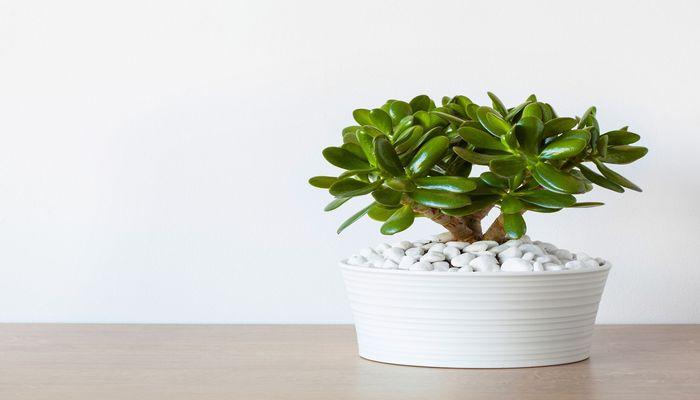
The Jade bonsai tree looks animated with its petite 6-inch height, round plump leaves, and oddly smooth trunk that branches out into a symmetrical crown.
This bonsai tree stores water, so the whole bonsai tree appears youthful, as if it is made of clay.
In autumn the jade bonsai occasionally grows tiny white flowers if it has survived some drought periods during the growing season. The bark of immature plants is smooth and green. Later it turns reddish brown as they mature.
5. Chinese elm
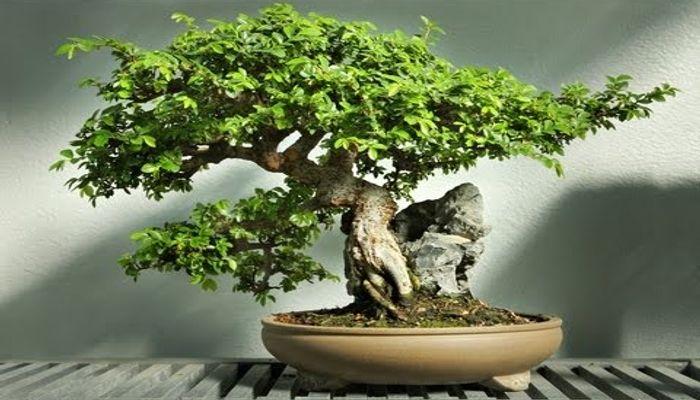
This bonsai tree is quite famous throughout the world. Also, Chinese elm bonsai is mostly selected by beginners.
Chinese elm bonsai is the first bonsai of interested people. A newbie can get a gap of breath because this bonsai tree can survive over or under-watering.
Just prevent the Chinese elm from freezing or overcooling to grow the tree as a bonsai tree.
It is a fast-growing bonsai and creates beautiful lush and compact foliage pads. They are easy to grow into an informal upright bonsai style. If you are in search of an indoor bonsai that is remarkably realistic in appearance, with a beautiful twiggy structure, Chinese elm would be my recommendation.
6. Deshojo bonsai

Cherry blossoms are not the only thing the Japanese are famous for. Beautiful maple trees are also famous in Japan.
Wouldn’t it be great if these Japanese maple trees could be made into bonsais? Certainly! This is precisely what Deshojo is; it is the Japanese maple tree.
Deshojo bonsai is strictly for the outdoors. Because maple trees need enough natural atmosphere to breathe. Deshojo is the best choice if you want something visually pleasing.
7. Hornbeam Bonsai
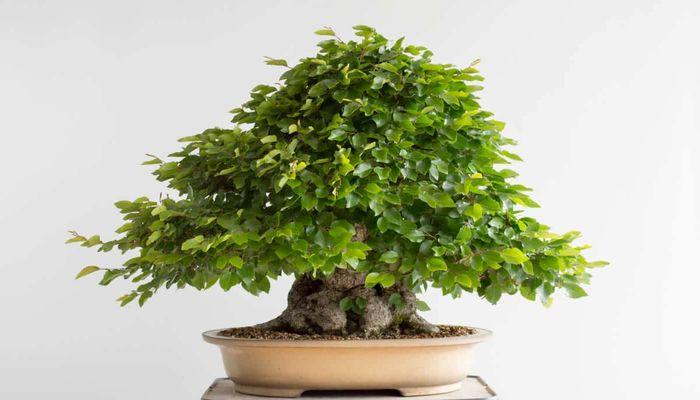
They are native to Korean hardwood trees. The best thing about this bonsai tree is that it is adaptive, and you can easily grow it both inside and outside the house.
Hornbeam bonsai’s favourite spot is in the garden and balcony. If you plan to grow this beautiful plant indoors, make sure that the plant does not freeze.
Hornbeam bonsai is very well suited and favored for bonsai as they have captivating trunks, striking green foliage, and nice autumn shades. Sometimes the reddish brown dry leaves remain on the twigs until the following spring which is a unique sight.
8. Buttonwood Bonsai
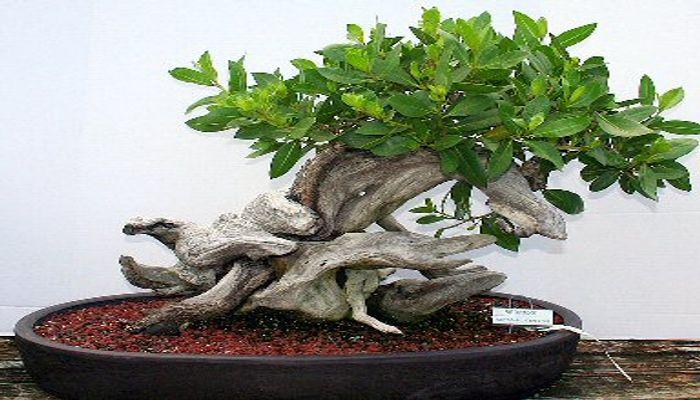
Among the Smallest bonsai trees, buttonwood bonsai is unique and is just cultivated for its cult. Despite the negative opinions people express about Buttonwood, it is unattractive and bizarre.
It is regarded as artistic by many, and its odd look has created a cult for itself. Some people do not like bonsai trees, but they like Buttonwood Bonsai for its artistic appeal.
9. Juniper Bonsai
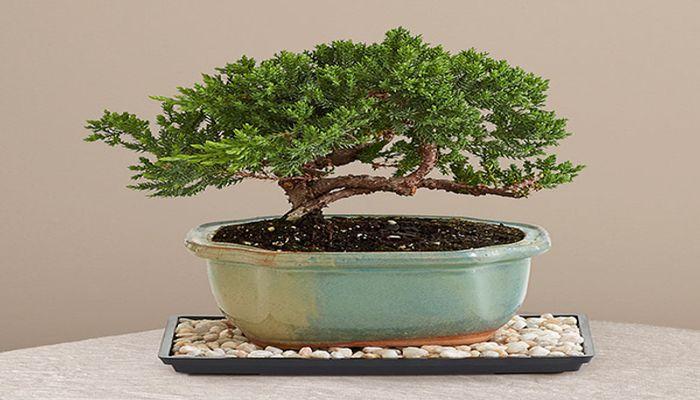
This bonsai tree is also known as Shimpaku, and it is popular for its bushy and pleasing look. Because of Juniper hardwood, it is easy and possible to maintain it as the smallest bonsai tree.
This smallest bonsai tree is often grown as an outdoor bonsai tree.
Again, make sure that you do not freeze the Juniper bonsai tree. Also, it should be grown according to your geographical weather conditions.
Junipers are also perfect for jin, shari, uro, or deadwood. It produces live veins underneath the broken or dying branches that dry out and break to create deadwood. The deadwood is then naturally skinned, polished, and paled by climatic states that make it very long-lasting.
10. Wisteria Bonsai
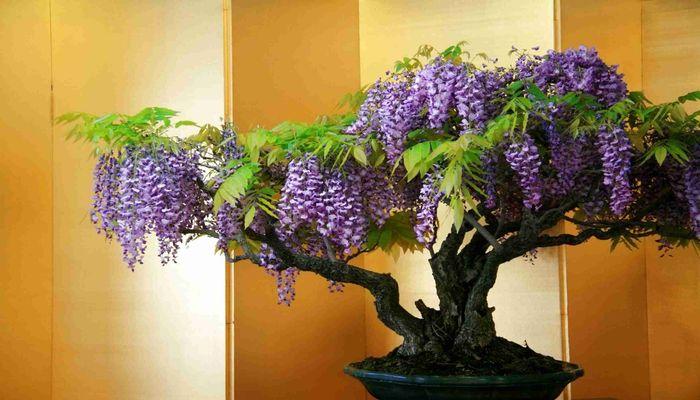
Usually, Wisteria bonsai is found in China and Japan as they are native. You can prune wisteria and easily make them into fine bonsai trees. Its attractive blue and mixed purple leaves give them an artistic pleasure. Artists and bonsai lovers always hail this bonsai tree.
Moreover, it is not challenging to grow, and it is easy to control and maintain this smallest bonsai tree’s growth. In addition to Chinese wisteria, Japanese wisteria can also be pruned into bonsai.
The wisteria bonsai should be positioned under full sunlight during their active season. Sunlight is important for flower production. In-ground-grown wisteria is equipped to handle frost, but the roots need a shield when they are grown in pots. A cold but frost-free greenhouse, indoors, or garage will provide enough winter protection for a wisteria bonsai tree.
11. Fuchsia Bonsai
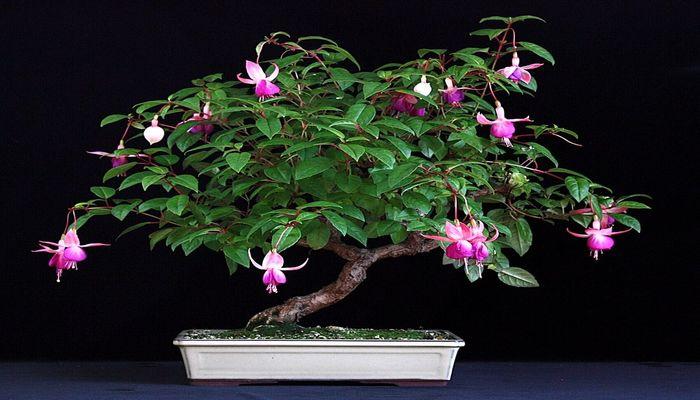
Fuchsia Bonsai is not usually considered a bonsai variety. But the growers who love the smallest bonsai trees say that it can be a beautiful bonsai tree with the help of wiring and pruning. In addition, fuchsia needs lots of wiring to control its growth and maintain it as the smallest bonsai tree.
Do you know what makes this bonsai tree more beautiful?
Even though you control its leaf density, its flower will always grow in a regular size. The tiny leaves and traditional flowers make this bonsai tree an eye-catcher tree.
12. White Pine Bonsai
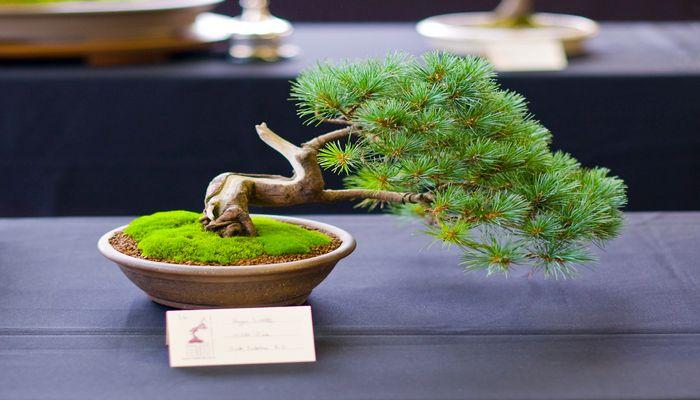
Japanese pine trees can be grown indoors using wiring and bonsai techniques to control growth. Also, white pine trees can be grown indoors, like bonsai. It is similar to other pine varieties.
Moreover, the pine bonsai tree is usually grown for more than 100 years. So, isn’t it great to have a beautiful 100-year-old bonsai tree at your place?
White pine bonsai can endure huge amounts of sun exposure and thrive in several hours of full sun every day. The more sunlight a white pine acquires, the shorter and more compact its needles will be. Long, leggy needles on a white pine bonsai means the tree needs more sunlight.
13. Pomegranate Bonsai
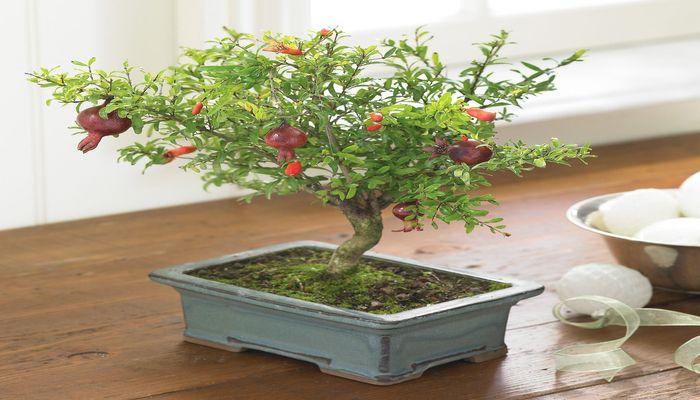
Pomegranate is widely famous as a bonsai tree and an ideal choice because it has a natural twisted trunk, edible fruits, and stunning flowers. When pruned as bonsai, a pomegranate tree makes an artistic piece of art. If you weren’t aware of this before, you know now.
In addition, to get a beautiful twisty appearance, you do not even need wiring.
All you need is regular pruning to control the Pomegranate tree’s density. As said before, a twist occurs naturally, and natural things are more beautiful than something that is forced. Adding this twisty tree to your indoors or outdoors adds aesthetics to your place.
14. Flowering Pear

This tree is native to central European countries. And Europe is popular for its beautiful fruit trees and fruit gardens.
Imagine having this European beauty in a small container!
The tree can be easily pruned as a bonsai, and it is fun to look at those cute pears that the tree blooms.
But it is not easy to control the growth of Flowering Pear. You need to have experience handling the density of the Flowering Pear bonsai tree before you grow it as a small bonsai tree. So, if you are a beginner, this tree is not recommended to you.
15. Rocky Mountain Juniper
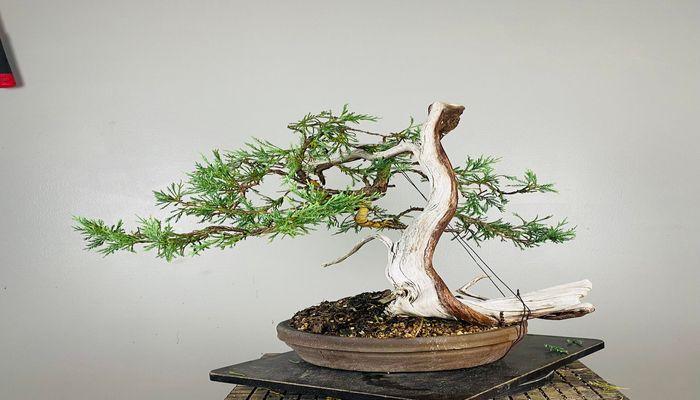
As the name suggests, these trees grow in the Rocky Mountains, and they are wild. Also, many experts claim that wild trees make lovely bonsais. So, when these wild junipers are pruned, they make an artistic small bonsai tree.
Juniper bonsai trees are so alive and visually pleasing that you always crave to look at them.
The Juniper bonsai ensure that you do not turn your eyes away from these masterpieces. The tree feels as if some Sculptors have Sculpted statues on the hardwood.
16. Black Pine bonsai

As you have already understood, you can make any Japanese pine tree into fine bonsai. But unlike other pine trees, black pine has a unique feature. When you prune them and maintain them like saplings, the black pine bonsai look like a snowflake on a toothpick.
When exposed outdoors, these smallest bonsai trees catch the morning dew and are pleasing to behold. Therefore, black pine bonsai look different from other pine tree bonsai.
17. Daisy Bonsai

Daisy is one of the most famous flowers. They are popular for their look, colour, and unforgettable fragrance.
So, if you could prune them into bonsai, imagine the small tree blooming out beautiful daisies.
Though flowers bloom in regular size, you can control the trunk’s density. In addition, experts say that daisies bloom even in spring. Moreover, the usage of white daisy bonsai is widely spread throughout the world.
18. Hawaiian Umbrella bonsai
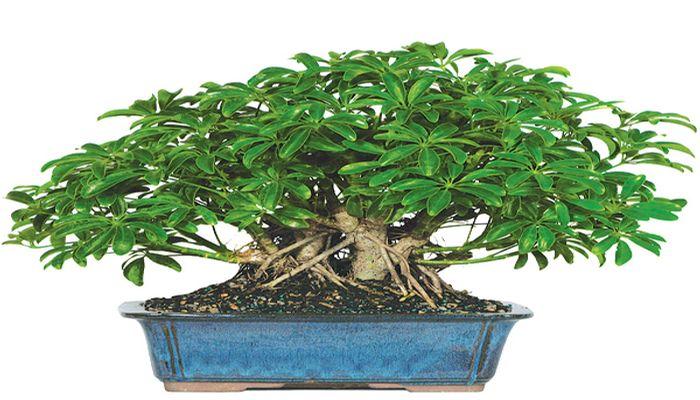
The Hawaiian Umbrella bonsai has unapologetically green attire. In addition, it is one of the easiest bonsai trees to take care of.
Moreover, you do not need a green thumb or years of experience in bonsai practice to make this plant thrive in your home.
This trouble-free evergreen bonsai is 9-10 inches in size and adds beauty to your place with hardly any effort.
19. Olive bonsai tree

With this miniature olive bonsai tree, complete your indoor garden. This bonsai will instantly add a Mediterranean flair to your interior design.
The tiny green olives hanging from the branches look like dainty little earrings, which will always catch everyone’s attention.
20. Mame bonsai
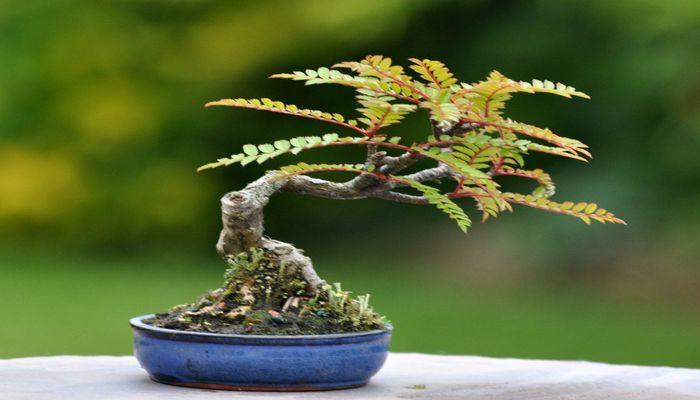
The Charming Mame bonsai is so small that you can hold it with the tips of your fingers. Despite its modest proportions, Mame bonsai always draws attention to itself.
The bonsai has precious little leaves and delicate white flowers. Moreover, this bonsai tree bears so many blossoms. The Mame bonsai almost look like scattered pearls.
21. Boxwood
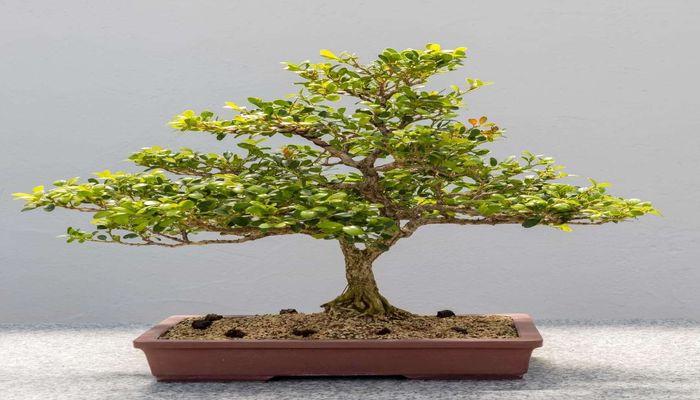
Boxwood is a tropical 6-inch bonsai tree that proudly shows its bright side. In spring, it will amaze you with its beautiful small flowers, and in the summer, it will bear tiny red fruit.
Also, during the growing season, you will admire its new offshoots in a deep red shade. Moreover, its green foliage is attractive. That foliage colour will be there for you when the other colours fade.
22. Serissa bonsai

The pink serissa bonsai tree is famous for its short 7-8 inches height and delicate rose-shaped pink flowers. This bonsai tree will certainly make your bedroom or living room look more beautiful.
The pretty bold ceramic pot works best for this Serissa bonsai. You can also try different shades to find the one that best matches your interior style.
23. White Serissa bonsai
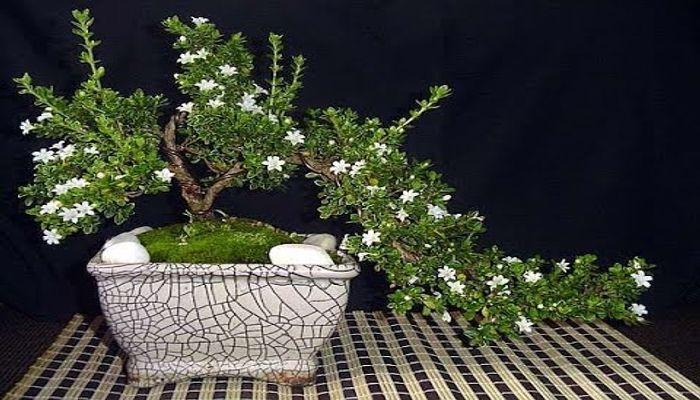
This Serissa bonsai grows white flowers that look a whole lot like roses. The beautiful snow-white blossoms add a dash of innocence to the interior design.
White Serissa bonsai is 6-8 inches tall and looks more amazing next to its sister that blooms pink (Pink Serissa bonsai).
24. Brush cherry bonsai
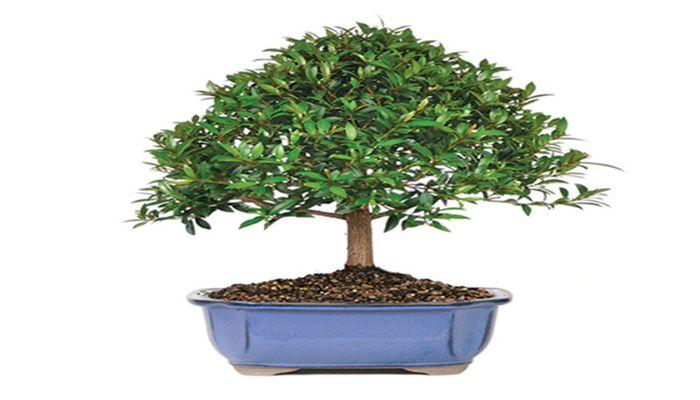
The tiny brush cherry bonsai is only 6-7 inches tall, but it will amaze you when you least expect it.
Just place this mini one in a spot with lots of sunlight and enjoy its shiny evergreen leaves that slowly develop red highlights. This transformation will surely amaze you. In addition, you can expect its white bloom to look forward to each year.
25. Cherry Blossom (Sakura)

You would have heard about Sakura, as they are one of the prides of Japan. Do you know that there is no Japanese piece of art without referring to cherry blossoms?
Sakura is pink and so beautiful that many people visit Japan to have a lovely time having sushi under these Sakura trees.
Although it is not easy, but possible to have a bonsai version of the Sakura tree.
Lists of the most beautiful and smallest bonsai trees should conclude with the most beautiful. And that would certainly be Sakura!
FAQs
1. How often do I need to water the small bonsai tree?
Never allow the soil to dry out completely. Insert your finger half an inch into the ground to check the soil moisture. If the soil appears dry, it is time to water your miniature bonsai tree. After some time, you will develop a sense of how often to water your bonsai.
2. How small can the bonsai tree be?
The smallest bonsai is Keshitsubo which measures 1-3 inches in height. Some of the bonsai are so small that they can be planted in a thimble and held in the air with the tip of a finger.
3. How long can a small bonsai live?
Under proper conditions, a small bonsai can live up to 100 years old. Some of them had even lived for centuries.
Conclusion
Bonsai is the art that balances nature with careful cultivation and aesthetic choice that results in miniaturized versions of many different tree species. These small plants and trees require a lot of care and attention from saplings to flourish into beautiful versions of their bigger selves.
Caring for small bonsai is not difficult, but it is a long-term commitment. In addition, it requires knowledge of plant growth and careful consideration of pruning, trimming, watering, and replanting.
So, let us know which of the smallest bonsai tree you liked in the comment section.
Related Articles
- Bonsai, Cake and a Meaningful Gift for Birthday
- 9 Herbs To Grow Indoors All Year Round
- Needles Drying Out On Juniper Bonsai- Causes, Signs, and Treatment.
- How To Grow And Care For Dogwood Bonsai
- All About Grow Light- Best Grow Lights For Your Bonsai In 2024
- White spots on the leaves?- Powdery mildew on bonsai (identification and solution).

